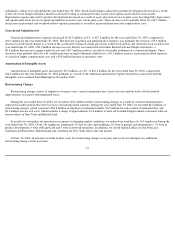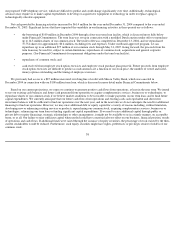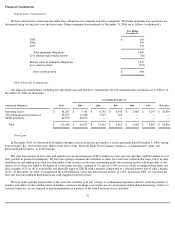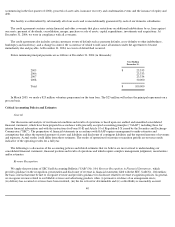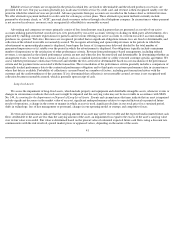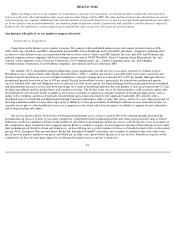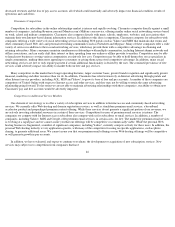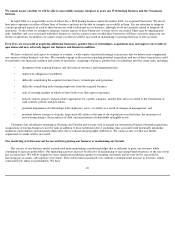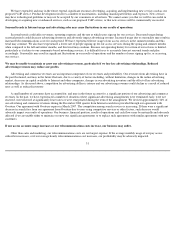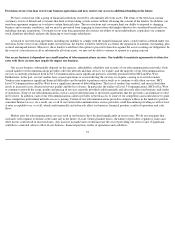Classmates.com 2004 Annual Report Download - page 46
Download and view the complete annual report
Please find page 46 of the 2004 Classmates.com annual report below. You can navigate through the pages in the report by either clicking on the pages listed below, or by using the keyword search tool below to find specific information within the annual report.
RISK FACTORS
Before deciding to invest in our company or to maintain or increase your investment, you should carefully consider the risks described
below as well as the other information in this report and our other filings with the SEC. The risks and uncertainties described below are not the
only ones facing our company. Additional risks and uncertainties not presently known to us or that we currently deem immaterial may also affect
us. If any of these risks actually materialize, our business, financial position, results of operations and cash flows could be adversely impacted.
In that event, the market price of our common stock could decline and you may lose all or part of your investment.
Our business will suffer if we are unable to compete effectively.
Internet Access Competition
Competition in the Internet access market is intense. We compete with established online service and content providers such as AOL,
AOL's Netscape subsidiary and MSN; independent national ISPs such as EarthLink and its PeoplePC subsidiary; companies combining their
resources to offer Internet access in conjunction with other services such as Yahoo! and SBC Internet Services, and AOL and Walmart.com;
national communications companies and local exchange carriers such as AT&T WorldNet, Qwest Communications International, Inc. and
Verizon; cable companies such as Comcast Corporation, Cox Communications, Inc., Charter Communications, Inc. and Adelphia
Communications Corporation; local telephone companies; and regional and local commercial ISPs.
The number of U.S. households using broadband has grown significantly over the last few years and is expected to continue to grow.
Broadband access, which includes cable, digital subscriber lines ("DSL"), satellite and wireless, generally offers users faster connection and
download speeds than dial-up access for a higher monthly fee, currently ranging from an estimated $27 to $55 per month, although offers for
promotional periods have been as low as $10 per month. Pricing for broadband services, particularly for introductory promotional periods,
services bundled with cable and telephone services, and services with slower speeds, has been declining and the pricing gap between broadband
and premium dial-up access services has been narrowing. As a result of broadband adoption, the total number of dial-up accounts in the U.S. has
declined and industry analysts predict that it will continue to decline. The decline in the size of the dial-up market could accelerate significantly
if broadband services become widely available at lower prices or if there is significant consumer adoption of broadband applications, such as
online video, telephony and music downloads, which depend upon connections that provide significant bandwidth. We currently offer a
broadband service in Nashville and Indianapolis through Comcast Corporation's cable systems. The service, however, is not value-
priced and we
have had a minimal number of subscribers sign up for it. While we review the possibility of offering broadband services from time to time, we
currently do not plan to offer broadband services on a significant scale, which will adversely impact our ability to compete for new subscribers
and to retain existing subscribers.
Our success historically has been based on offering dial-up Internet access services at prices below the standard monthly pricing of the
premium dial-up services of most of our major competitors. Competition from broadband providers and value-priced providers such as United
Online has resulted in significant declines in the number of subscribers to premium priced dial-up services over the last few years. In response to
this competition, many competitors have engaged, and are likely to continue to engage, in more aggressive pricing of their dial-
up services under
their premium-
priced brands to obtain and retain users, such as offering up to six free months of service or extended periods of free or discounted
pricing. AOL, through its Netscape subsidiary, EarthLink, through its PeoplePC subsidiary, and a number of small providers now offer value-
priced services at prices similar to our prices and which are, in some cases, priced below the prices of our services. Partially in response to this
competition, we have become more aggressive in offering discounted services and one or more free
44



